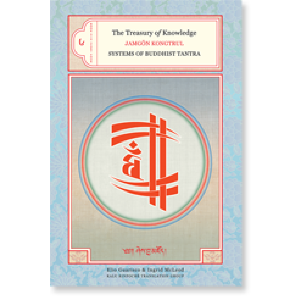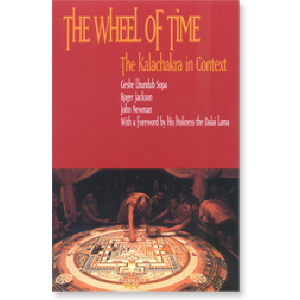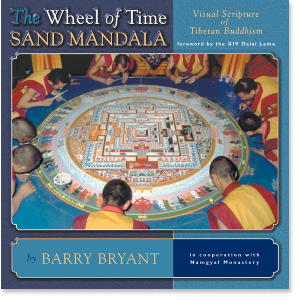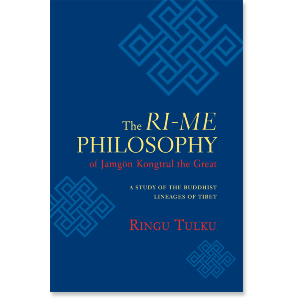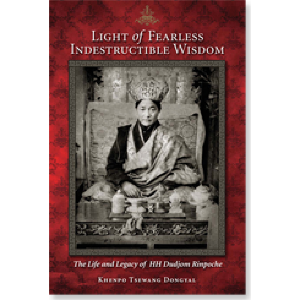| The following article is from the Autumn, 1990 issue of the Snow Lion Newsletter and is for historical reference only. You can see this in context of the original newsletter here. |
'Exploring the Mandala' at Cornell University
For the past two years the maroon-robed Tibetan Buddhist monk, Pema Losang Chogyen, from Namgyal Monastery of Dharamsala, India, has been a steady presence at the prestigious Program for Computer Graphics at Cornell University. In 1988 Pema, who is a scholar, artist and ritual arts master, was chosen to come to the United States for the purpose of translating the mandala structure as it is traditionally visualized into a useful three-dimensional format allowing the viewer to understand its basic inner and outer structure.
After exploring several possible approaches, Pema met Professor Donald Greenberg at Cornell University, who became very interested in the project. Professor Greenberg encouraged Pema to work at Cornell's Program for Computer Graphics and placed at his disposal the program's most advanced, state-of-the-art computer graphics technology together with the assistance of Cornell's technical staff. The computer-generated video that emerged from their collaboration is unique, both for its subject matter and for the extraordinary photographic realism of its images.
A three-dimensional mandala such as this, although described in outline form in Tibetan meditation texts, has never been produced to the scale of the viewer so as to allow complete visual inspection of its stage-by-stage construction and internal layout.
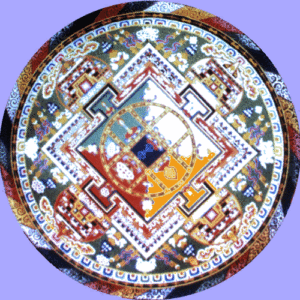 The short video, Exploring the Mandala, demonstrates the relationship between two-dimensional mandalas and their less familiar three-dimensional forms. A three-dimensional mandala such as this, although described in outline form in Tibetan meditation texts, has never been produced to the scale of the viewer so as to allow complete visual inspection of its stage-by-stage construction and internal layout. While the sequence of the mandala's construction does not precisely follow a specific ritual text, meditation practitioners will find this video especially interesting for its demonstration of the process of mandala generation.
The short video, Exploring the Mandala, demonstrates the relationship between two-dimensional mandalas and their less familiar three-dimensional forms. A three-dimensional mandala such as this, although described in outline form in Tibetan meditation texts, has never been produced to the scale of the viewer so as to allow complete visual inspection of its stage-by-stage construction and internal layout. While the sequence of the mandala's construction does not precisely follow a specific ritual text, meditation practitioners will find this video especially interesting for its demonstration of the process of mandala generation.
The specific subject is a variation of the Thirteen-Deity Vajra Bhairava (Yamantaka) mandala. It was chosen for its relatively simple structure and its similarity to other Tibetan Buddhist mandalas.
The 3D Vajrabhairava mandala, 'Exploring the Mandala' project with Cornell University's Program of Computer Graphics, led by the Ven. Pema Losang Chogyen.
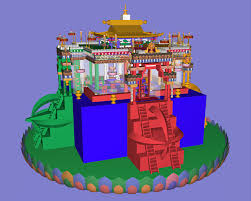
Exterior view of the Yamāntaka or Vajrabhairava mandala.

Interior view of the Yamāntaka or Vajrabhairava mandala.
This project was carried out with the blessings of His Holiness the Dalai Lama in response to a growing interest in the cultural and religious traditions of Tibet.
Snow Lion Publications originally produced a version of this video on VHS and poster of the three-dimensional image for distribution to individuals. Unfortunately, these are no longer available.
To learn more about the ritual arts in practice today, please visit: Namgyal Monastery Institute of Buddhist Studies in Ithaca, New York, is the North American Seat of the Personal Monastery of His Holiness the Dalai Lama.
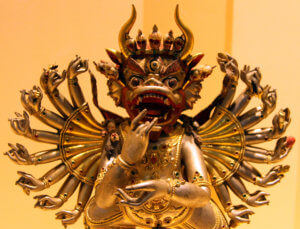
This bronze Tibetan statue from the XIX century is the Tibetan Buddhist Vajrabhairava, patron of the Gelugpa school which was founded by Je Tsongkhapa (1357–1419).

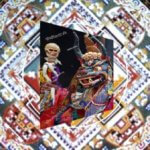
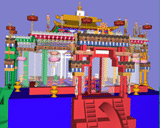
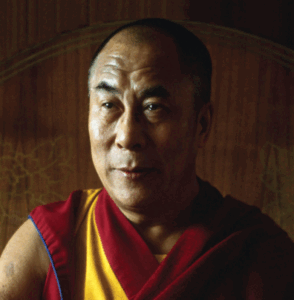 His Holiness the Fourteenth Dalai Lama
His Holiness the Fourteenth Dalai Lama